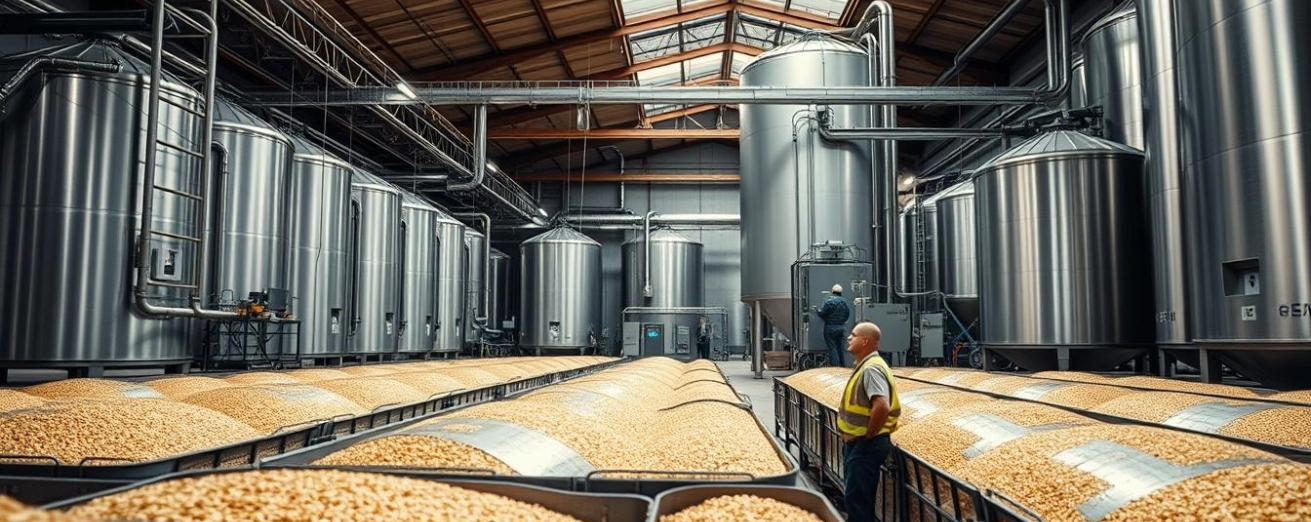In farming, what happens after the harvest is just as critical as the hard work in the field.
Across India, countless farmers lose a large portion of their produce due to poor postharvest storage practices, yet the solution already exists: scientific grain storage.
Imagine a system where grains are protected from pests, moisture, temperature fluctuations, and microbial damage, where each bag collected means more money in the farmer’s pocket and more security every season. That’s the promise of scientific grain storage, a modern lifeline for India’s grain economy.
What Is Scientific Grain Storage?
Scientific grain storage refers to the use of modern, scientifically proven methods to preserve grain quality, increase shelf life, and minimize losses. Unlike traditional methods, where grains are often stored in open or semi-covered spaces, scientific storage involves a controlled environment that maintains optimum temperature, humidity, and hygiene.
It’s not just about keeping the grains dry. It is about protecting the entire postharvest grain management process from damage caused by insects, rodents, fungi, and moisture.
Why Traditional Storage Isn’t Enough Anymore?
Traditional storage methods, such as storing grains in gunny bags or mud godowns, are unable to meet today’s challenges. According to government reports, India loses up to 10-15% of its total grain production due to inadequate storage practices.
These losses are mostly caused by:
- Insect infestations
- Rodent attacks
- Fungus and microbial growth
- Moisture seepage and spoilage
Due to changing climate conditions and erratic rainfall, grain losses in storage are increasing. This is why moving from traditional to scientific storage is no longer a luxury, it has become a necessity.
Benefits of Scientific Grain Storage for Farmers
Here’s why scientific grain storage is important for farmers and FPOs:
-
Reduces Post-harvest Losses
Proper fumigation, aeration, and sealing significantly reduce the risk of grain spoilage.
-
Preserves Grain Quality
Scientific storage ensures the grains retain their weight, colour, texture, and market value over time.
-
Increases Shelf Life
With grain preservation protocols, grains can be safely stored for several months without any degradation.
-
Enables Better Price Realization
Farmers can hold stocks and sell when market prices are favourable, thereby empowering them economically.
-
Prepares Grains for Export Markets
Maintaining quality and hygiene is essential for agricultural exports, and scientific grain storage ensures compliance.
Types of Scientific Storage Solutions Available Today
Let’s look at some of the modern grain storage methods widely adopted across India:
- Steel Silos: Airtight, temperature controlled structures are ideal for bulk storage.
- PEB Warehouses: Pre-engineered buildings with ventilation, insulation, and scientific infrastructure.
- Godowns with Fumigation Chambers: Essential for pest and microbial control.
- IoT-Enabled Warehouses: Use real-time sensors to monitor humidity, temperature, and storage conditions.
These setups ensure safe grain storage for farmers and minimise human error, thereby increasing operational efficiency.

How Scientific Storage Empowers FPOs and Agri Exporters
Scientific grain storage for Farmer Producer Organizations (FPOs) and agri exporters enables:
- Bulk storage of graded, quality produce
- Standardization in grain quality
- Easier sorting, packaging, and certification
- Access to organized markets and institutional buyers
- Reduced rejection in export consignments
Whether for domestic grain supply or agricultural commodity exports, the value of modern, secure storage infrastructure cannot be overstated.
The Future of Grain Storage in India
India is increasingly realising the vital role of grain storage infrastructure. With government support through schemes like NABARD warehouse subsidy and increased private investment in agri warehousing solutions, the sector is undergoing a quiet revolution.
In a climate affected world, temperature controlled grain storage will play a vital role in food security and farmers’ income stability.
Staragri: Powering India’s Scientific Grain Storage Revolution
If you’re looking for a reliable partner for scientific grain storage, look no further than Staragri.
With over two decades of experience, Staragri offers integrated, tech-enabled storage solutions that meet the evolving needs of India’s agricultural ecosystem. Staragri operates a pan-India network of 2,189 warehouses in 379 locations across 19 states, with a total storage capacity of 5.01 million metric tons.
The professional-grade warehouses and advanced grain silos are built to preserve the quality and longevity of agricultural produce. Whether you’re a farmer, FPO, trader, miller, or agri exporter, the facilities are designed to offer secure, scalable, and scientifically backed storage infrastructure.
From quality testing, grading, and fumigation to moisture control and pest prevention, every step is managed with precision to ensure your grain is protected and market-ready. What truly sets Staragri apart is the combination of scale, science, and service.
Conclusion
Scientific grain storage is now essential for protecting harvests, increasing profitability, and fostering long-term agricultural resilience. Scientific storage gives farmers, FPOs, and agribusinesses more control over their produce and revenues by reducing postharvest losses, preserving quality, and opening up new markets.
Adopting scientific storage is a step towards a safer, sustainable, and fulfilling future, regardless of your level of experience as a smallholder farmer or a major agri-exporter.
Ready to secure your harvest with confidence?
Connect with Staragri, India’s leading expert in agri warehousing and postharvest grain preservation.



